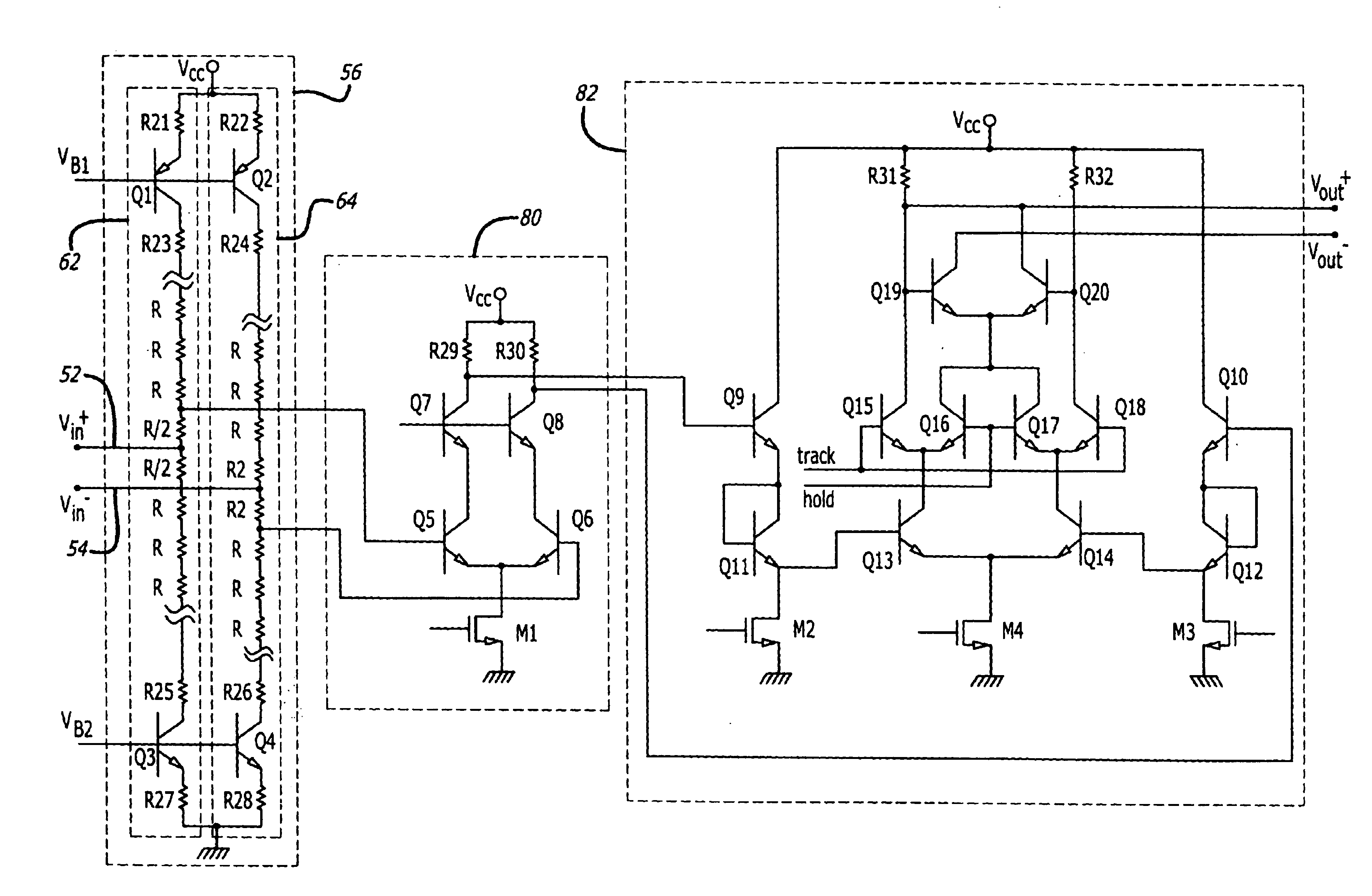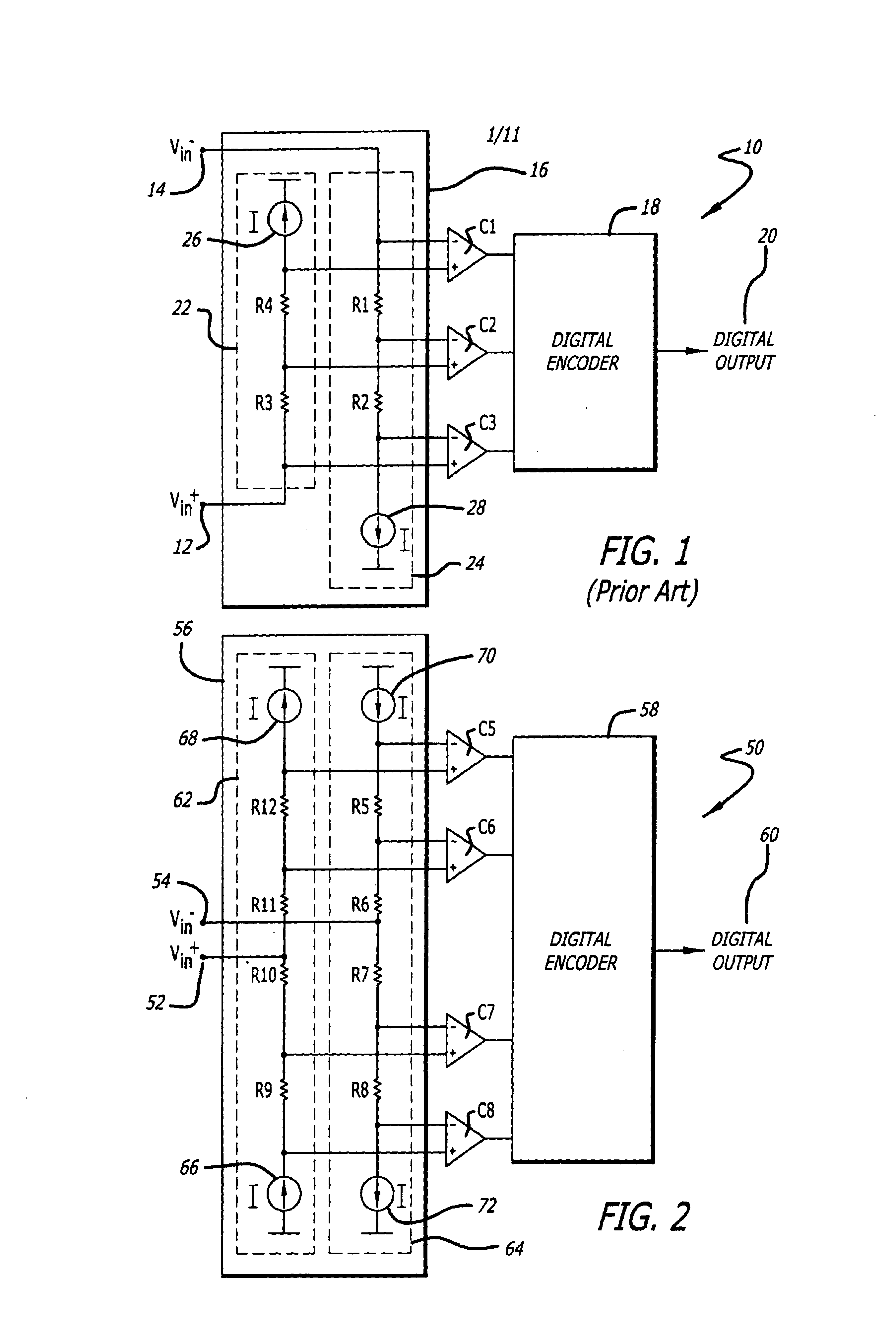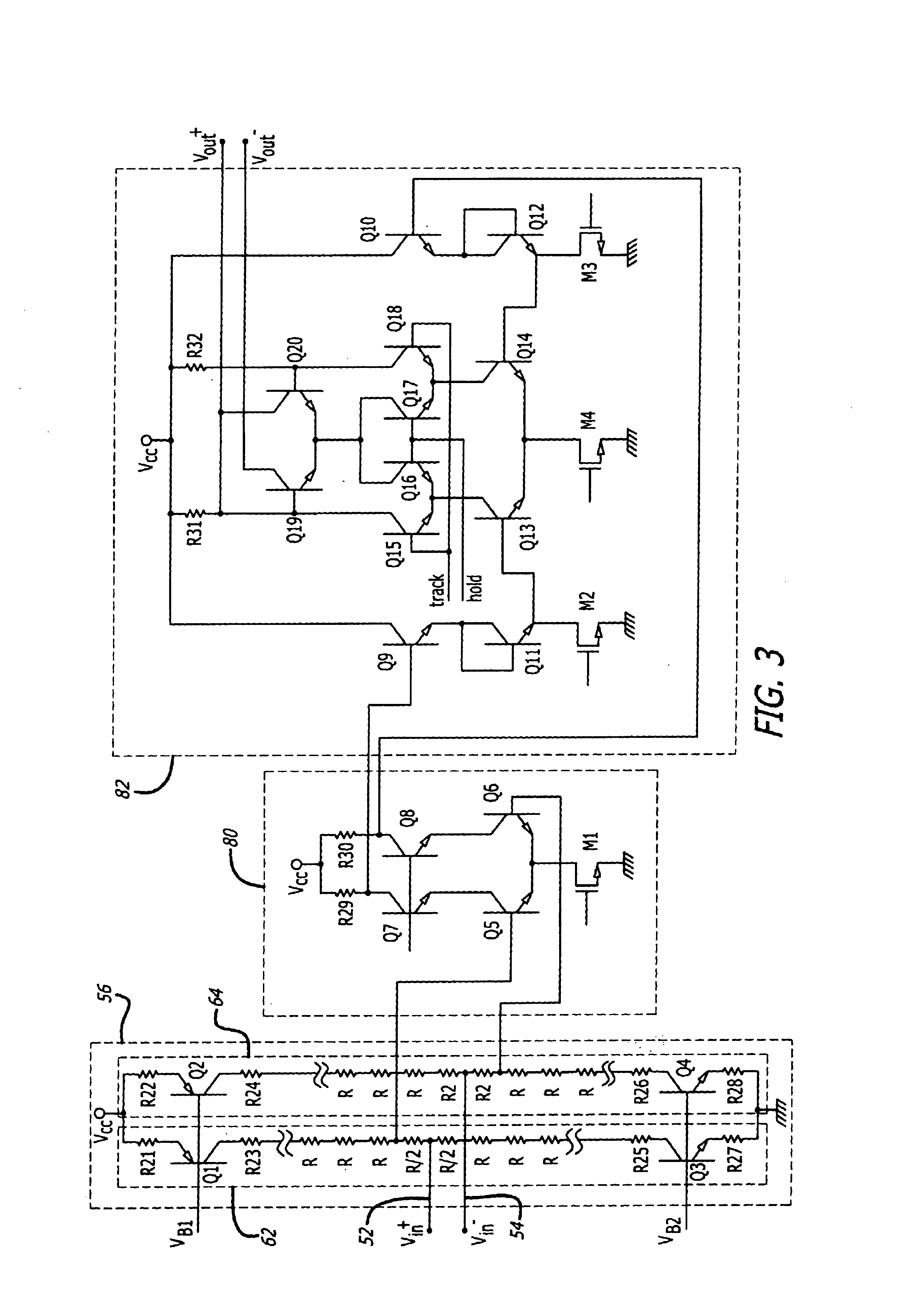Resistive ladder, summing node circuit, and trimming method for a subranging analog to digital converter
a technology of resistive ladder and resistive node, applied in the field of electronic devices, can solve the problems of flash adcs providing higher conversion speed, higher input capacitance, and adcs not meeting the needs of the marketpla
- Summary
- Abstract
- Description
- Claims
- Application Information
AI Technical Summary
Benefits of technology
Problems solved by technology
Method used
Image
Examples
Embodiment Construction
[0025]Illustrative embodiments and exemplary applications will now be described with reference to the accompanying drawings to disclose the advantageous teachings of the present invention.
[0026]While the present invention is described herein with reference to illustrative embodiments for particular applications, it should be understood that the invention is not limited thereto. Those having ordinary skill in the art and access to the teachings provided herein will recognize additional modifications, applications, and embodiments within the scope thereof and additional fields in which the present invention would be of significant utility.
[0027]In order to reduce the power of the ADC IC, new circuit architectures are required to be developed that take advantage of present day process technologies. Specifically, present day BiCMOS, or complementary bipolar, or CBiCMOS, can be utilized to reduce the power associated with the flash quantizer structure and the summing node circuit. Comple...
PUM
 Login to View More
Login to View More Abstract
Description
Claims
Application Information
 Login to View More
Login to View More - R&D
- Intellectual Property
- Life Sciences
- Materials
- Tech Scout
- Unparalleled Data Quality
- Higher Quality Content
- 60% Fewer Hallucinations
Browse by: Latest US Patents, China's latest patents, Technical Efficacy Thesaurus, Application Domain, Technology Topic, Popular Technical Reports.
© 2025 PatSnap. All rights reserved.Legal|Privacy policy|Modern Slavery Act Transparency Statement|Sitemap|About US| Contact US: help@patsnap.com



